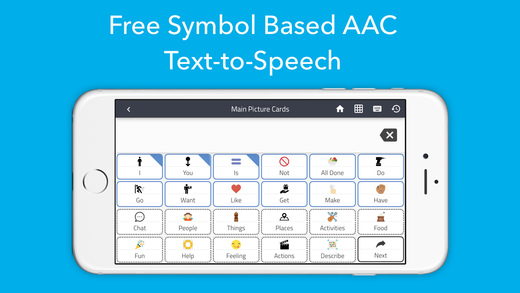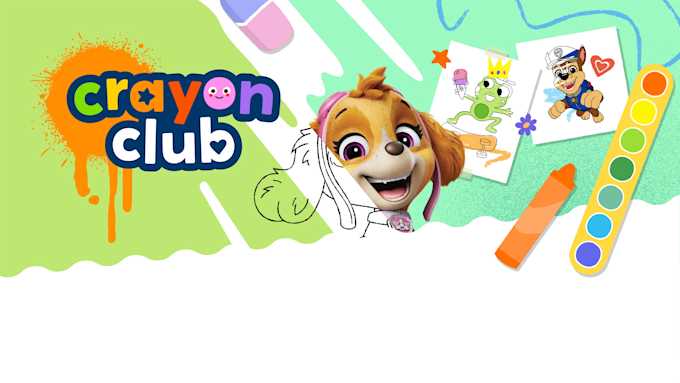AAC can be a great support to your child’s both expressive and receptive language. In this article, we will be going over what AAC is and how to get your child accustomed to using it.
What is AAC?
Augentative and Alternative Communication (AAC) includes all of the means and ways that a person uses to communicate beside talking. In other words, it augments a person’s speech and it is an alternative way that they can use instead of speech.
There are two types of AAC that your child can benefit as unaided and aided AAC. With rapid technological developments, aided AAC systems can be helpful for many families. High tech communication systems are much more beneficial as they are more accessible today than they were years ago.
Why is AAC important?
People who have speech or language problems may seek different ways to communicate. For instance, nonverbal autistic children or those with speech impediment may need additional assistance when it comes to communicate with others without talking. Or sometimes, people may have surgeries and need AAC for communication while they are getting better.
When Should You Start Using AAC Devices?
There’s no specific prerequisites to start using AAC devices. This means that the age of the child, their cognitive abilities or linguistic level doesn’t have to be at a specific place to start using AAC devices. The decision to start using an AAC device should be discussed with professionals at length.
How to Choose the Right AAC Devices for Your Child?
There are many AAC applications that you can download to your smartphone or tablet, including our free Otsimo AAC application, which can be found on App Store and Play Store. But, how to teach AAC is another thing. Although AAC devices are easy to use and access, it may still be a challenging experience for children to learn how to navigate the system. Besides from the challenges the children face, parents may also find it difficult to incorporate the AAC device into child’s everyday life. Here are some tips to help teach AAC to your child for him to get the hang of the AAC system.

Find a suitable device to teach AAC to your child
The first thing you should consider is to get an appropriate AAC system for your child. For this, a specialist in this area needs to evaluate your child. This specialist usually is a speech-language pathologist or an occupational therapist specialized in AAC. Your child might be more comfortable with a tablet computer, for instance, in terms of technical usage, turning the device on/off etc.
Modeling is crucial
Children need to see how the AAC device is being used. They need to feel comfortable, and this comfort comes from the fact that someone else around them also makes use of AAC device. Children with typical development learn to speak by hearing everyone else around them speak. This should happen with children with special needs, too. We need to model the communication on AAC device, just as we model verbal language for children learning to talk. You can continue modeling with new concepts and words, even after the child gets the hang of the device.
Use the device as much as possible in natural, real situations. For example, if your child wants a cracker, say cracker and show it on the device. Just as children need to hear speech a lot in order to learn it, children with special needs also need to be with the AAC device a lot so that they can understand that it is a communication system through they can express themselves. Use the device around the child, with the child, with others as much as possible.
Practice, incorporate, become familiar…
“It is critical for an individual to not only have symbols but also to have experience with those symbols in a symbol-rich environment/print rich environment. The typically developing child will have been exposed to the oral language for approximately 4,380 waking hours by the time he begins speaking at about 18 months of age. If someone is using a different symbol set and only has exposure to it two times a week, for 20 – 30 minutes each, it will take the alternate symbol user 84 years to have the same experience with his symbols that the typically developing child has with the spoken word in 18 months!!!”
The typically developing child will demonstrate language competency around 9 – 12 years of age having been immersed in and practicing oral language for approximately 36,500 waking hours. For 9 – 12 years that child has been using and receiving corrective feedback while practicing with the spoken word. At twice a week, 20 – 30 minutes each time, it will take the alternate symbol user 701 years to have the same experience.” Jane Korsten (2011) QIAT Listserv 4th April

Be prompt, appropriate and consistent
It is important that you continue the communication line coming from your child. You should respond to your child immediately with what he/she requests. The child needs to understand that certain actions through AAC will be leading to certain consequences. In order for the child to understand how to request or say something to get another thing, these responses you give must be consistent.
AAC device should always be around
The AAC device will be a pathway for your child to express what is going on in her mind. It is important to make sure that the device is always around within the child’s reach. Once she gets used to it, she will be taking it with her. Initially, you will give her the device, but the goal here is to teach the child to advocate for the device, as it is her right to communicate in the most comfortable way and to teach her to protest the removal of the device.
Encourage use of the AAC device
It is normal for the child to not use the device at first. Or she might even push the buttons randomly to see what they do. However, it is important to understand that instead of taking the device away saying it is not a toy, you can give a meaningful response even to the random acts. It is an exploration phase, so it will pass. The child will, eventually, with the help of your meaningful responses, get the hang of it and quit using it randomly. Have patience and guide your child through this exploration phase.
If your child is throwing tantrums over those crackers, wait calmly for the challenging behavior pass and prompt your child to the use the AAC device to make the request. This request does not have to come with challenging behavior. She may use her gestures or body language to indicate she wants something. At these times, prompt her to request what she wants using the device and respond to the request. Try to incorporate the use of AAC into every possible, natural aspect of everyday life of the child. AAC should feel like a natural extension.
Get everyone on board
Tell your child’s peers about the AAC device. After all, Augmentative and Alternative Communication exists so that your child can communicate at home, school and everywhere communication naturally occurs. Have them get interested or curious about the device. Suggest them to use the device in turn to communicate. You can also get the adults in child’s life involved in the AAC system. Explain methods they can use, give them simple facts to make communication easier. In order to be able to do all of these, you should also take some time to learn the AAC device.
Sources:
- Vanderbilt:
http://vkc.mc.vanderbilt.edu/ebip/augmentative-and-alternative-communication/
- Jane Farrall:
http://www.janefarrall.com/aac-systemic-change-for-individual-success/
- Speech and Language Kids:
https://www.speechandlanguagekids.com/teach-your-child-to-use-an-aac-device/



